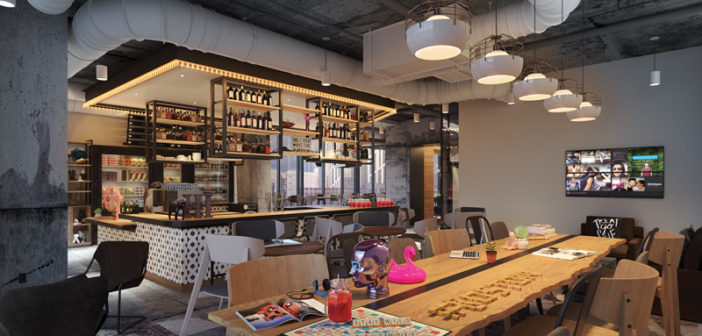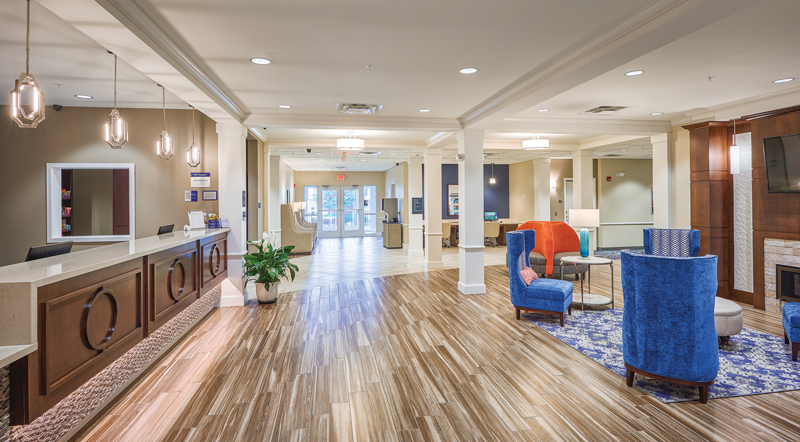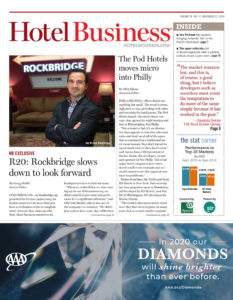NATIONAL REPORT—Despite being on the cusp of a potential industry downturn—or possibly already at the beginning of it—the upper-midscale and midscale segments are faring relatively well and may even thrive as we enter 2020.
“To the degree that the domestic economy is slowing, we would expect that traveler budgets will tighten,” said Mark Woodworth, senior managing director, CBRE Hotels Americas Research. “History suggests that when this happens some consumers decide to cancel or shorten their trip (we think the likelihood of that happening in a material way in the near-to-midterm is highly remote) or trade down from a higher-priced alternative. Upper-midscale and midscale properties should benefit as a result.”
For the upper-midscale segment at year-end 2018, occupancy reached 67.9%, ADR increased by 1.7% (reaching $112.99), RevPAR increased by 1.6% (increasing to $76.69), supply increased by 3.7% and demand increased by 3.6%.
“The downturn, which has begun, is expected to be very modest at best. The recently released Q3 2019 GDP numbers were a positive surprise, suggesting that the year ahead may be a little better than previously anticipated,” Woodworth continued.
For midscale at year-end 2018, occupancy reached 58.6%, ADR increased by 1.6% (reaching $86.95), RevPAR increased by 1.8% (increasing to $50.97), supply increased by 1.2% and demand increased by 1.4%.
“In the midscale segment, we see new supply being absorbed reasonably well across North America,” said Brad LeBlanc, SVP/chief development officer, Best Western Hotels & Resorts. “It appears RevPAR will remain flat for a majority of markets despite the addition of new supply. Developers have been in a ‘wait and see’ mode, but we believe this trend will encourage those developers to get off the sideline and continue investing in the near future.”
And the future is looking bright for both segments, with CBRE’s report projecting upper-midscale occupancy to hit 67.6%, ADR to increase by 0.9%, RevPAR to increase by 0.5%, supply to increase by 3.4% and demand to increase by 3.0% by year-end 2019.
For midscale year-end 2019, occupancy is projected to hit 58.1%, ADR to increase by 0.4%, RevPAR to decrease by 0.6%, supply to increase by 2.2% and demand to increase by 1.2%.
“Unlike the upscale and upper-upscale segments—the fastest growing among all chain scales as defined by STR—supply growth in the midscale category is driven largely by conversion activity (as opposed to new-construction),” Woodworth said. “To a lesser degree, the same is true within upper-midscale. This has been changing of late with the creation of several new brands that target this tier. Thus, overall supply growth in the upper-mid and midscale segments has lagged that of the industry average as a whole. These new upper-midscale rooms should be readily absorbed as consumers are attracted to many of these new, fresh concepts that, given their typical price point, afford a highly attractive value proposition.”
Looking to 2020, Woodworth said that above-average supply growth this year and next will diminish pricing power in the upper-midscale segment, leading to some declines in RevPAR in 2020 and 2021.
“An expanding economy in 2022 should lead to much-improved performance conditions such that upper-midscale RevPAR enjoys a solid gain. Supply growth in the upper-midscale segment will draw demand from midscale properties, thus impairing midscale hotels. RevPAR declines in 2019, 2020 and 2021 should occur as a result,” he added.
Not all believe that we’ve entered a downturn just yet, but believe, however, that it’s coming. Preparation for the challenges ahead is key, and companies are bracing themselves.
“We are clearly at the top of a cycle; the question is: How long of a runway do we have before a downturn?” LeBlanc questioned. “As construction costs continue to rise and acquisition volume declines, Best Western has expanded its development team and placed a renewed focus on creating value through conversion opportunities. Best Western is predominantly a conversion brand across the mid-priced segment and tends to weather a downturn better than a brand focused primarily on new-construction.”
For upper-midscale, there are 2,326 projects with 236,991 rooms in the total pipeline, according to Lodging Econometrics’ (LE) Q3 2019 data. There are 696 projects with 71,523 rooms currently under construction, 996 projects with 100,321 rooms scheduled to start in the next 12 months and 634 projects with 65,147 rooms in the early planning stage.
For midscale, there are 933 projects with 81,041 rooms in the total pipeline, according to LE’s Q3 2019 data. There are 180 projects with 19,070 rooms currently under construction, 444 projects with 36,127 rooms scheduled to start in the next 12 months and 309 projects with 25,844 rooms in the early planning stage.
“The upper-midscale and midscale chain scales combined account for a robust 57% of the total U.S. hotel construction pipeline by project,” said JP Ford, principal/director of global business development, LE. “Within the last year, both chain scales have individually experienced record counts in their pipelines, and this is reflective in the LE forecast for new hotel openings in 2019, 2020 and 2021. In each of these years, 57% or more of all new hotel openings in the U.S. are forecast to be in either the upper-midscale or midscale chain scales.”
For Toni Stoeckl, global brand leader/VP, distinctive select brands, Marriott International, these segments have seen continuous growth, including brands that appeal to evolving consumers and both leisure and business travelers.
“As with any segment, the upper-midscale segment is affected by any movement in the economic cycle,” Stoeckl said. “We do see that collecting experiences over things continues to matter to consumers—and that is true at any price point. The combination of value and experiential benefits of these brands, we believe, will set them up for long-term success.”
Experiences for both upper-midscale and midscale guests are expanding beyond gateway cities into lesser-known destinations, which is where the segments are focusing development.
“Travelers are also taking note of the great impact that overtourism has on a destination. They’re looking for under-the-radar destinations to avoid the crowds in search of more authentic, transformative experiences,” he added.
Moxy currently operates 46 hotels, and there are currently 104 Moxy hotels in the signed pipeline.
For Best Western, nearly 90% of its branded hotels are conversions; in comparison, the Best Western Plus brand sees much higher percentages of new-construction representation.
“As a result, we will continue to focus Best Western on conversion opportunities in primary markets where we have unaccommodated demand, as well as high profile secondary and tertiary/highway markets,” LeBlanc said.
Woodworth said that because these segments have fewer moving parts (restaurants, meeting/banquet space, etc.) and thus employ fewer people, they have less exposure when it comes to industry challenges like labor. However, these segments aren’t burden-free.
One significant challenge is a lack of consistency, LeBlanc said, with many brands in these segments being legacy brands built through conversion. He advises companies to continually invest and improve their portfolios. In any downturn, LeBlanc said, midscale owners reposition their assets to a brand with the strongest reservation system available.
“By investing in an asset to increase appeal to a younger generation, owners gain the ability to drive rates in many markets where the comp set may experience a rate cap,” LeBlanc said. “In an attempt to protect market share, we’re seeing more midscale owners seeking to replicate elements that are popular in the upscale segment properties—open lobbies, workspaces, etc. It can be a good idea to adopt a few elements, but the challenge is some of these amenities can put pressure on operating margins.”
Brand leaders remain hopeful, however, that they can weather financial fluctuations, delivering experiences and offerings that appeal to guests who crave value, but also authenticity.
“Our aim is to provide highly relevant experiences for guests and be well-positioned to handle sudden shifts in the wind that come with any business,” Stoeckl said. “We’re small but have a healthy runway to continue to grow and are continuously looking at ways to innovate. By focusing on programming, we look to build experiences and make emotional connections with consumers and talent for the long term.” HB



